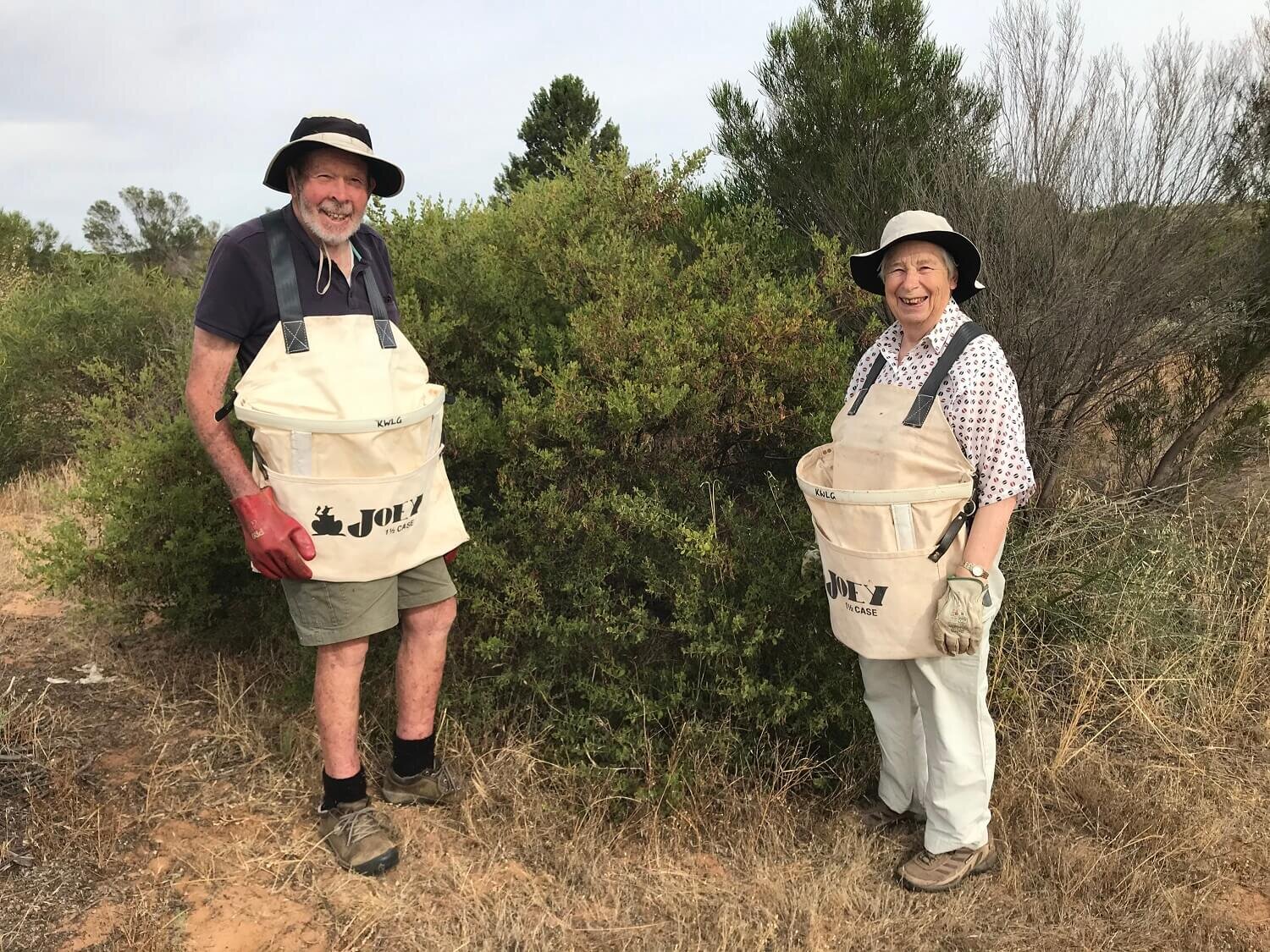Wattle day
Happy Wattle day to everyone for the first of September! Here in the Mallee, we are half way through the flowering season.
I love that, no matter what else is going on, the Wattles have their own, consistent rhythm. The species flower in the same order every year. This mimics the order of seeding, and for us, the order which we need to collect seed for revegetation.
First up is Harrow Wattle (Acacia acanthoclada) in late July - a deep gold scattered throughout the Mallee woodland to show that Spring is around the corner. Some years have more flowers than others; 2020 was a great year, 2021 not so much. But what?! The tiny seed in the curly pods is ready early in December. I’m never ready to collect the seed and often miss it.
The next flowering is Nealie (Acacia rigens) throughout August, always very floriferous. It’s dotted throughout the place now, but in 2000 it was uncommon to see this species in Hattah-Kulkyne National Park because of the high grazing pressure. What a recovery! The small seed sets in mid-December. Grrrr. Just when we’re trying to get organised for Christmas. Wear a face mask to collect this one, the dust makes you sneeze and wheeze.
Seed from left to right, Harrow Wattle, Nealie, Grey Mulga and Sandhill Wattle (with the red and yellow arils - these are the reward for ants who collect and disperse the seed).
Thick and fast now. It’s time for Grey Mulga (Acacia brachybotrya) and the Sandhill Wattle (Acacia ligulata) from September. The larger seeds of these species forms the bulk of our revegetation seed mix, easy to pick, easy to clean, reliable.
But the seed is ready over the Christmas / New Year break! No holiday from seed collecting, it’s our busiest time. A funny video of Phil trying to harvest wattle seed like olives is here. If you visit for Christmas, that’s what you’ll be doing …
Mum and Dad thought they were visiting for some Christmas rest and relaxation. I think they had forgotten that Christmas is also known as "the time we have to collect Acacia brachybotrya otherwise, all the seed will fall on the ground."
Wattles have a symbiotic association with Rhizobium bacteria. Little nodules on the Wattle roots can fix nitrogen from the air, forming useful, plant-available nitrogen. This makes Wattles good for the restoration of poor soils (think Mallee sand). We grow Wattles, especially Sandhill Wattle, and harvest the branches for mulch. The mulch is a good mix of nitrogen and carbon, and best of all the Sandhill Wattle regrows from the cut stump. It’s the perfect cut-and-come-again mulch provider, permaculture style. Actually, Sandhill Wattle Acacia ligulata is an absolute rock star - see https://www.malleeconservation.com.au/blog/acacia-ligulata
For everything about Wattle Day: http://www.wattleday.asn.au/
First published September 1, 2020. Updated 2021.






